外研版(2019)选择性必修第四册 Unit6 Space and beyond Using language 精品课件(共25张PPT)
文档属性
| 名称 | 外研版(2019)选择性必修第四册 Unit6 Space and beyond Using language 精品课件(共25张PPT) | 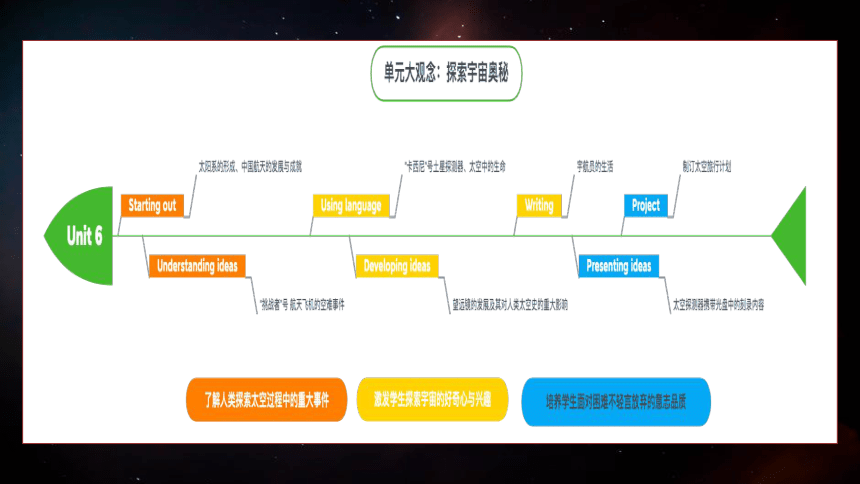 | |
| 格式 | pptx | ||
| 文件大小 | 40.6MB | ||
| 资源类型 | 教案 | ||
| 版本资源 | 外研版(2019) | ||
| 科目 | 英语 | ||
| 更新时间 | 2023-03-07 15:07:26 | ||
图片预览

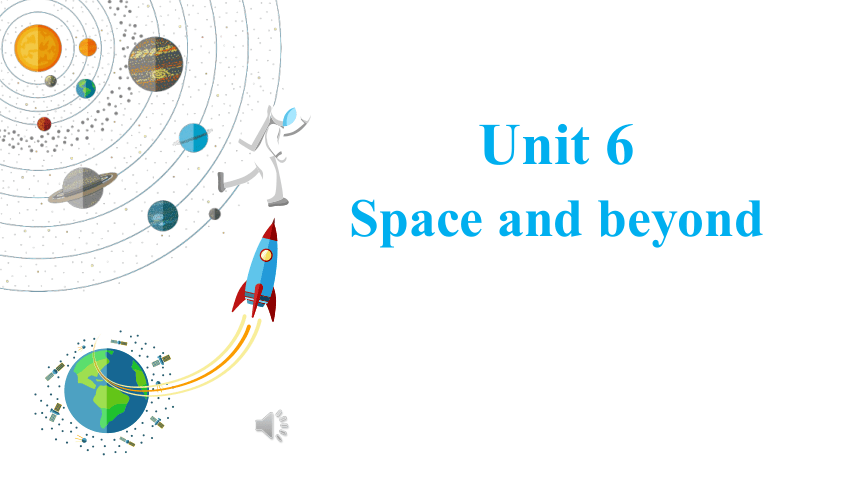
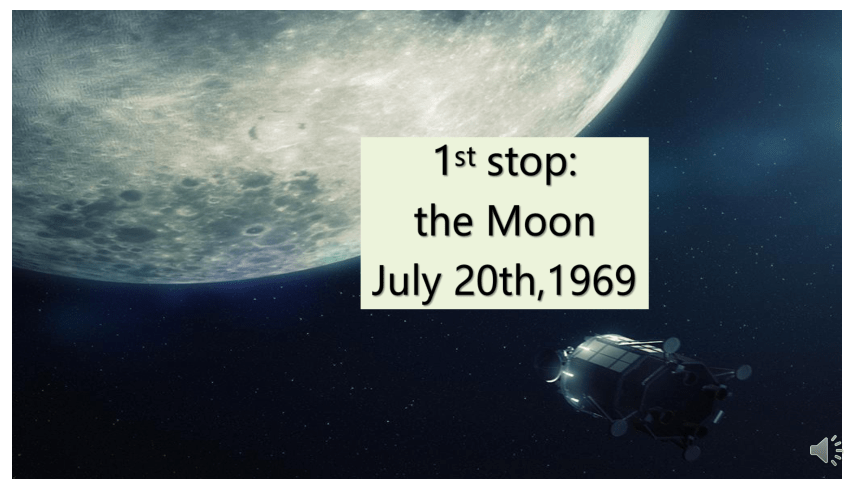
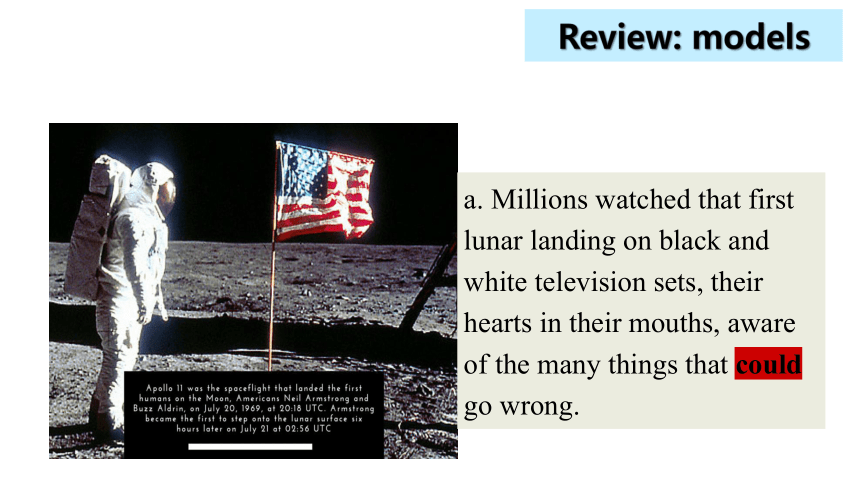

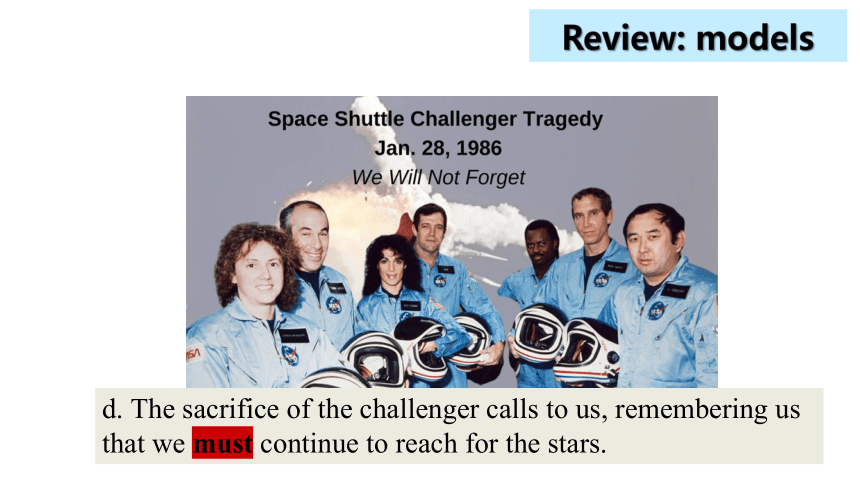
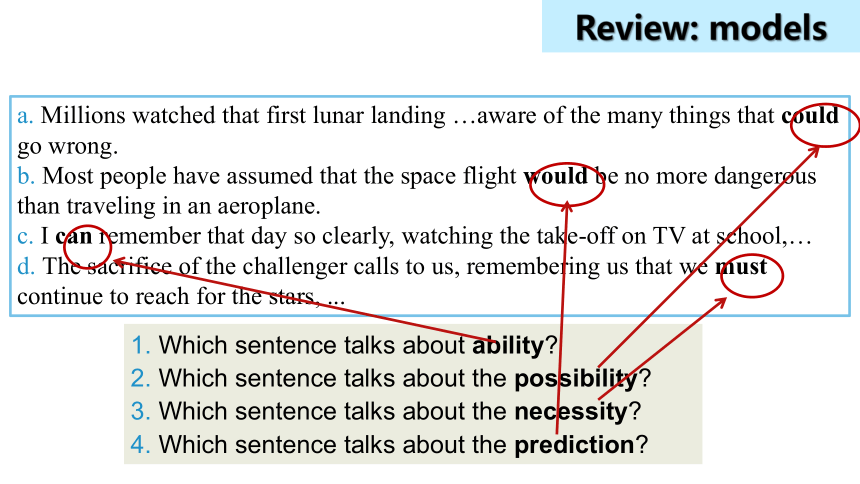

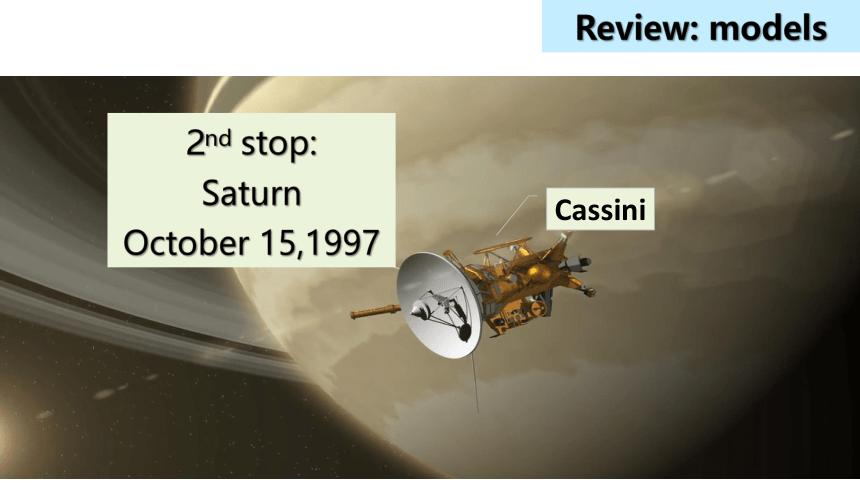
文档简介
(共25张PPT)
Unit 6
Space and beyond
—— Using language
1st stop:
the Moon
July 20th,1969
Review: models
Activity 1
a. Millions watched that first lunar landing on black and white television sets, their hearts in their mouths, aware of the many things that could go wrong.
Review: models
Activity 1
b. The world went into shock. Most people have assumed that the space flight would be no more dangerous than traveling in an aeroplane.
c. I can remember that day so clearly, watching the take-off on TV at school.
Review: models
Activity 1
d. The sacrifice of the challenger calls to us, remembering us that we must continue to reach for the stars.
Activity 1 Answer the questions
a. Millions watched that first lunar landing …aware of the many things that could go wrong.
b. Most people have assumed that the space flight would be no more dangerous than traveling in an aeroplane.
c. I can remember that day so clearly, watching the take-off on TV at school,…
d. The sacrifice of the challenger calls to us, remembering us that we must continue to reach for the stars, ...
Review: models
1. Which sentence talks about ability
2. Which sentence talks about the possibility
3. Which sentence talks about the necessity
4. Which sentence talks about the prediction
Now look for more sentences with models in the reading passage.
With the eyes of the students across the nation upon her, she might have inspired an entirely new generation of astronauts and space scientists.
The sacrifice of the challenger calls to us, remembering us that we must continue to reach for the stars, no matter how distant they might seem.
Review: models
possibility
Review: models
Cassini
Activity 2
2nd stop:
Saturn
October 15,1997
On 15 October 1997, the Cassini spacecraft set out on a mission to explore the planet Saturn. So great was the distance from the Earth that it would/shall need to travel for almost six years to reach its destination. When it reached Saturn, it sent back amazing images of the planets’ famous rings viewed in ultraviolet light. Cassini made numerous trips around the Saturn so it could/must collect data. Over the following years, Cassini took 450,000 images of the planet and its moons. Finally, on 15 September 2007, Cassini was pointed towards Saturn so that it should/would meet a fiery end. Scientists had decided that Cassini could/must be destroyed this way, so it must/would not collide with any of Saturn’s moons. In its nearly 20-year mission, Cassini provided so much information that scientists could/would not process it all. No wonder so many people took to social media to bid it goodbye, saying, “ Farewell, dear Cassini, we shall/should never forget you!”
Activity 2 Choose the correct modals.
prediction
ability
prediction
necessity
prediction
ability
determination
3rd stop:
Mars
January 24th, 2040
Activity 3 Tell a story using modals.
I couldn’t believe it when I looked into the Martian sky …
Zhurong 4th
Space flight
Mount Olympus
could; might; must; shall; would…
Review: models
I couldn’t believe it when I looked into the Martian sky, which was “dark yellowish brown” for plenty of dust remained in the atmosphere. In the distance stood an active volcano whose next eruption might be a few years later. What impressed me most was Tianwen 4th, which could travel faster and farther and would continue traveling south. Never in my dream could I imagine that plants were growing there, with reddish-orange flowers like thistles. Never shall I forget that day! You should see it with you own eyes!
Activity 3 Tell a story using modals.
Review: models
The Fermi Paradox: according to some calculations, there should be many other civilizations out there, but there is no evidence of these at all. No spacecraft, no radio transmissions, nothing. So, as Fermi said, "Where is everybody "
Life in space
4th stop:
discussion programme
Science, fact or fiction
Scientist,
Eric Pringle
Life in space
Science fiction author
Sophie Ellis
Activity 5 Listen to the interview and choose the questions discussed.
1 Is there life on other planets
2 What would life on other planets look like
3 Should we use robots to explore space
4 What is the Fermi Paradox
5 Will people ever make contact with life on
other planets
Life in space
Interviewee’s questions
Answers
1. Is there life on other planets Sophie: There must be millions of planets like ours, and some could have life 1 ______________________.
Eric: You would think it likely that 2 _____________________________.
But that’s 3________________________the Fermi Paradox.
2. What would life on other planets look like Sophie: Life on other planets won't look like us
because 4_______________________________________________________.
Eric: Because evolution 5 ________________________________________, life on other planets is likely to look like us.
3 Will people make contact with life on other planets Eric: We cannot 6 _______________________,which means it would take more than a lifetime to reach planets where there might be life.
Sophie: Maybe we don't need to travel in straight lines. Perhaps we will be able to 7______________________________________________________ to make contact with life on other planets.
Activity 6 Complete the table.
Life in space
similar to our own
there are forms of life
conditions on other planets won’t be like those on Earth
without considering
would work the same way everywhere
travel faster than light
take short cuts, through a “wormhole” in space
1. I think there definitely is.
2. Since..., it isn't reasonable to...
3. There's evidence that...
4. It would be wonderful if...
5. The fact that... means...
6. Let's hope that...
Activity 7 Complete the boxes with the expressions from the interview.
Expressing opinions
Expressing hopes
Life in space
1, 2, 3, 5
4, 6
Last stop
Life in space
Activity 8 Read the passage and answer the questions.
1 What’s the passage mainly about
2 Would you like to take part in a space camp Why or why not
The space camp
What can students do in the space camp
Activity 9
Life in space
At the observatory, you can learn more about the astronomy and take in lunar eclipse.
You will also have the chance to design and launch a model rocket.
Then in modern flight simulators, you could put on a spacesuit, exit the capsule and go on a incredibly lifelike spacewalk in a world with zero gravity.
Dear Ted,
Remember when I told you I'd signed up for the space programme Well I just got back from a week of simulated manned flight activities, and it was awesome!
We started out with some theory, learning about astronomy in the 1.__________________, and then 2. __________________model rockets. After that we tried the simulator. I put on a 3 ___________________ and went for a walk in 4 ________________________________. It's strange to float around like that-in fact, a lot of people get 5 ___________________! Luckily, I felt fine. Then I returned to the 6_______________ and travelled to the "Moon“ for some lunar exploration. You should join the programme too-you'd love it!
Activity 10 Complete the email with the correct form of the words and expressions in Activity 9.
observatory
launched
spacesuit
a world with zero gravity
space sick
capsule
Life in space
Homework Imagine you are going to apply for the programme. Organize your ideas for the short video by answering the questions and submit it!.
Life in space
1 Why do you want to take part in the programme
2 What activities would you like to experience
3. What is it about space that most interests you What have you learnt about it
Unit 6
Space and beyond
—— Using language
1st stop:
the Moon
July 20th,1969
Review: models
Activity 1
a. Millions watched that first lunar landing on black and white television sets, their hearts in their mouths, aware of the many things that could go wrong.
Review: models
Activity 1
b. The world went into shock. Most people have assumed that the space flight would be no more dangerous than traveling in an aeroplane.
c. I can remember that day so clearly, watching the take-off on TV at school.
Review: models
Activity 1
d. The sacrifice of the challenger calls to us, remembering us that we must continue to reach for the stars.
Activity 1 Answer the questions
a. Millions watched that first lunar landing …aware of the many things that could go wrong.
b. Most people have assumed that the space flight would be no more dangerous than traveling in an aeroplane.
c. I can remember that day so clearly, watching the take-off on TV at school,…
d. The sacrifice of the challenger calls to us, remembering us that we must continue to reach for the stars, ...
Review: models
1. Which sentence talks about ability
2. Which sentence talks about the possibility
3. Which sentence talks about the necessity
4. Which sentence talks about the prediction
Now look for more sentences with models in the reading passage.
With the eyes of the students across the nation upon her, she might have inspired an entirely new generation of astronauts and space scientists.
The sacrifice of the challenger calls to us, remembering us that we must continue to reach for the stars, no matter how distant they might seem.
Review: models
possibility
Review: models
Cassini
Activity 2
2nd stop:
Saturn
October 15,1997
On 15 October 1997, the Cassini spacecraft set out on a mission to explore the planet Saturn. So great was the distance from the Earth that it would/shall need to travel for almost six years to reach its destination. When it reached Saturn, it sent back amazing images of the planets’ famous rings viewed in ultraviolet light. Cassini made numerous trips around the Saturn so it could/must collect data. Over the following years, Cassini took 450,000 images of the planet and its moons. Finally, on 15 September 2007, Cassini was pointed towards Saturn so that it should/would meet a fiery end. Scientists had decided that Cassini could/must be destroyed this way, so it must/would not collide with any of Saturn’s moons. In its nearly 20-year mission, Cassini provided so much information that scientists could/would not process it all. No wonder so many people took to social media to bid it goodbye, saying, “ Farewell, dear Cassini, we shall/should never forget you!”
Activity 2 Choose the correct modals.
prediction
ability
prediction
necessity
prediction
ability
determination
3rd stop:
Mars
January 24th, 2040
Activity 3 Tell a story using modals.
I couldn’t believe it when I looked into the Martian sky …
Zhurong 4th
Space flight
Mount Olympus
could; might; must; shall; would…
Review: models
I couldn’t believe it when I looked into the Martian sky, which was “dark yellowish brown” for plenty of dust remained in the atmosphere. In the distance stood an active volcano whose next eruption might be a few years later. What impressed me most was Tianwen 4th, which could travel faster and farther and would continue traveling south. Never in my dream could I imagine that plants were growing there, with reddish-orange flowers like thistles. Never shall I forget that day! You should see it with you own eyes!
Activity 3 Tell a story using modals.
Review: models
The Fermi Paradox: according to some calculations, there should be many other civilizations out there, but there is no evidence of these at all. No spacecraft, no radio transmissions, nothing. So, as Fermi said, "Where is everybody "
Life in space
4th stop:
discussion programme
Science, fact or fiction
Scientist,
Eric Pringle
Life in space
Science fiction author
Sophie Ellis
Activity 5 Listen to the interview and choose the questions discussed.
1 Is there life on other planets
2 What would life on other planets look like
3 Should we use robots to explore space
4 What is the Fermi Paradox
5 Will people ever make contact with life on
other planets
Life in space
Interviewee’s questions
Answers
1. Is there life on other planets Sophie: There must be millions of planets like ours, and some could have life 1 ______________________.
Eric: You would think it likely that 2 _____________________________.
But that’s 3________________________the Fermi Paradox.
2. What would life on other planets look like Sophie: Life on other planets won't look like us
because 4_______________________________________________________.
Eric: Because evolution 5 ________________________________________, life on other planets is likely to look like us.
3 Will people make contact with life on other planets Eric: We cannot 6 _______________________,which means it would take more than a lifetime to reach planets where there might be life.
Sophie: Maybe we don't need to travel in straight lines. Perhaps we will be able to 7______________________________________________________ to make contact with life on other planets.
Activity 6 Complete the table.
Life in space
similar to our own
there are forms of life
conditions on other planets won’t be like those on Earth
without considering
would work the same way everywhere
travel faster than light
take short cuts, through a “wormhole” in space
1. I think there definitely is.
2. Since..., it isn't reasonable to...
3. There's evidence that...
4. It would be wonderful if...
5. The fact that... means...
6. Let's hope that...
Activity 7 Complete the boxes with the expressions from the interview.
Expressing opinions
Expressing hopes
Life in space
1, 2, 3, 5
4, 6
Last stop
Life in space
Activity 8 Read the passage and answer the questions.
1 What’s the passage mainly about
2 Would you like to take part in a space camp Why or why not
The space camp
What can students do in the space camp
Activity 9
Life in space
At the observatory, you can learn more about the astronomy and take in lunar eclipse.
You will also have the chance to design and launch a model rocket.
Then in modern flight simulators, you could put on a spacesuit, exit the capsule and go on a incredibly lifelike spacewalk in a world with zero gravity.
Dear Ted,
Remember when I told you I'd signed up for the space programme Well I just got back from a week of simulated manned flight activities, and it was awesome!
We started out with some theory, learning about astronomy in the 1.__________________, and then 2. __________________model rockets. After that we tried the simulator. I put on a 3 ___________________ and went for a walk in 4 ________________________________. It's strange to float around like that-in fact, a lot of people get 5 ___________________! Luckily, I felt fine. Then I returned to the 6_______________ and travelled to the "Moon“ for some lunar exploration. You should join the programme too-you'd love it!
Activity 10 Complete the email with the correct form of the words and expressions in Activity 9.
observatory
launched
spacesuit
a world with zero gravity
space sick
capsule
Life in space
Homework Imagine you are going to apply for the programme. Organize your ideas for the short video by answering the questions and submit it!.
Life in space
1 Why do you want to take part in the programme
2 What activities would you like to experience
3. What is it about space that most interests you What have you learnt about it
